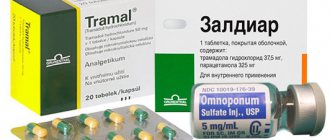Magnelis B6 forte tablets 100 mg + 10 mg No. 30
A country
Russia
The country of production may vary depending on the batch of goods. Please check with the operator for detailed information when confirming your order.
Active substance
Magnesium citrate + Pyridoxine
Compound
Active ingredients: magnesium citrate, pyridoxine hydrochloride.
pharmachologic effect
Pharmacodynamics. Magnesium is a vital element that is necessary for the normal functioning of cells and is involved in most metabolic reactions. In particular, it is involved in the regulation of the transmission of nerve impulses and muscle contraction. 50% of the amount of magnesium contained in the body accumulates in bone tissue. Pyridoxine (vitamin B6) is involved in many metabolic processes, helps improve the absorption of magnesium from the gastrointestinal tract and its penetration into cells. Serum magnesium concentration: between 12 and 17 mg/l (1 - 1.4 mEq/l or 0. 5 - 0.7 mmol/l): indicates moderate magnesium deficiency; Below 12 mg/L (1 mEq/L or 0.5 mmol/L): indicates severe magnesium deficiency. The body receives magnesium through food. A lack of magnesium in the body can occur with a deficiency in intake or with an increase in the need for magnesium. Pharmacokinetics: Gastrointestinal absorption of magnesium salts occurs partially through a passive mechanism in which the solubility of the salt plays a decisive role. The degree of this absorption does not exceed 50%. Excretion occurs primarily by the kidneys.
Indications for use
Established magnesium deficiency, isolated or associated with other deficiency conditions, accompanied by symptoms such as increased irritability, minor sleep disturbances, gastrointestinal cramps, rapid heartbeat, increased fatigue, muscle pain and spasms, and a tingling sensation in the muscles. If after a month of treatment there is no improvement in these symptoms, continuing treatment is not advisable.
Mode of application
The tablets should be taken whole with a glass of water. Adults: 3-4 tablets per day, divided into 2-3 doses, with meals. Children over 12 years of age: 2-4 tablets per day, divided into 2-3 doses. during meals.Usually the duration of treatment is one month.
Interaction
Before prescribing other medications, you should consult with your doctor about the possibility of taking them simultaneously with the drug. Contraindicated combinations: With levodopa: the activity of lsvodone is inhibited by lyridoxine (if this drug is not combined with the use of peripheral aromatic L-amino acid decarboxylase inhibitors). Any amount of pyridoxine should be avoided unless levodopa is taken in combination with peripheral aromatic L-amino acid decarboxylase inhibitors. Combinations not recommended: Concomitant use of drugs containing phosphates or calcium salts may impair intestinal absorption of magnesium. Combinations to consider. When prescribing tracyclines orally, it is necessary to maintain an interval of at least three hours between ingestion of tetracycline and Magnelis B6 forte, since magnesium preparations reduce the absorption of tetracyclines.
Side effect
Immune system disorders: Very rare: allergic reactions, including skin reactions; Gastrointestinal disorders: Unknown frequency: diarrhea, abdominal pain, nausea, vomiting, flatulence.
Contraindications
Hypersensitivity to any of the components of the drug; severe renal failure (creatinine clearance less than 30 ml/min); age under 12 years (efficacy and safety have not been established); hereditary galactosemia, glucose and galactose malabsorption syndrome or lactase deficiency (due to the presence of composition of the drug lactose monohydrate); simultaneous administration of levodopa.
Overdose
Symptoms: With normal kidney function, an overdose of magnesium when taken orally usually does not lead to toxic reactions. However, in case of renal failure, magnesium poisoning may develop. Symptoms of overdose, the severity of which depends on the concentration of magnesium in the blood: decreased blood pressure; nausea, vomiting; depression of the central nervous system, decreased reflexes; changes in the electrocardiogram; respiratory depression, coma, cardiac arrest and respiratory paralysis; anuric syndrome. Treatment. Rehydration, forced diuresis. In case of renal failure, hemodialysis or peritoneal dialysis is necessary.
special instructions
With caution. Moderate renal failure (risk of developing hypermagnesemia). Use during pregnancy and lactation. Pregnancy. Clinical experience with the use of a combination of magnesium citrate and pyridoxine hydrochloride in a sufficient number of pregnant women did not reveal any adverse effects on the occurrence of fetal malformations or fetotoxic effect. The drug can be used during pregnancy only if necessary, on the recommendation of a doctor. Breastfeeding period. Taking into account that magnesium passes into breast milk, if it is necessary to take the drug, it is recommended to stop breastfeeding. The drug is intended only for adults and children over 12 years of age. The drug contains lactose monohydrate, therefore its use is not recommended for patients with hereditary galactosemia, glucose-galactose malabsorption syndrome or lactase deficiency. In case of moderate renal failure, the drug should be taken with caution due to the risk of developing hypermagnesemia. With simultaneous deficiency of calcium and magnesium, magnesium deficiency should be replenished before starting to take calcium supplements or dietary supplements containing calcium. When pyridoxine is used in high doses (more than 200 mg per day) for a long time (over several months or in some cases years), sensory axonal neuropathy may develop, which is accompanied by such symptoms such as numbness and impaired proprioceptive sensitivity, tremor of the distal limbs and gradually developing sensory ataxia (impaired coordination of movements). These disorders are usually reversible and disappear after stopping taking vitamin B6.
Magnelis B6 Forte tab ppo 100mg+10mg No. 30
Compound
Active ingredients: magnesium citrate 100 mg, pyridoxine hydrochloride 10 mg.
Pharmacokinetics
Gastrointestinal absorption of magnesium salts occurs partly through a passive mechanism in which the solubility of the salt plays a determining role. The degree of this absorption does not exceed 50%. Excretion occurs primarily by the kidneys.
Indications for use
Established magnesium deficiency, isolated or associated with other deficiency conditions, accompanied by symptoms such as:
- increased irritability;
- minor sleep disturbances;
- gastrointestinal cramps or rapid heartbeat;
- increased fatigue;
- pain and muscle spasms;
- tingling sensation.
Contraindications
- hypersensitivity to any of the components of the drug;
- severe renal failure (creatinine clearance less than 30 ml/min);
- age up to 12 years (efficacy and safety have not been established);
- hereditary galactosemia, glucose and galactose malabsorption syndrome or lactase deficiency (due to the presence of lactose monohydrate in the drug);
- simultaneous use of levodopa (see “Drug interactions”).
With caution: moderate renal failure (risk of developing hypermagnesemia).
Directions for use and doses
The tablets should be taken whole with a glass of water.
Adults: 3-4 tablets/day, divided into 2-3 doses, with meals.
Children over 12 years of age: 2-4 tablets/day, divided into 2-3 doses, with meals.
Typically the duration of treatment is 1 month.
Storage conditions
The drug should be stored out of the reach of children at a temperature not exceeding 25°C.
Best before date
2 years. Do not use after the expiration date stated on the package.
special instructions
The drug "Magnelis® B6, forte, film-coated tablets" is intended only for adults and children over 12 years of age.
The drug contains lactose monohydrate, therefore its use is not recommended for patients with hereditary galactosemia, glucose-galactose malabsorption syndrome or lactase deficiency.
In case of moderate renal failure, the drug should be taken with caution due to the risk of developing hypermagnesemia.
If calcium and magnesium are deficient at the same time, the magnesium deficiency should be corrected before taking calcium supplements or dietary supplements containing calcium.
When pyridoxine is used in high doses (more than 200 mg per day) for a long time (over several months or in some cases years), sensory axonal neuropathy may develop, which is accompanied by symptoms such as numbness and impaired proprioceptive sensitivity, distal tremor limbs and gradually developing sensory ataxia (impaired coordination of movements). These disorders are usually reversible and disappear after stopping taking vitamin B6.
Dosage form
White film-coated tablets, oblong, biconvex; White or almost white when cut.
Use in children
Contraindication: children under 12 years of age.
Action
Magnesium is a vital element that is found in all tissues of the body and is necessary for the normal functioning of cells and is involved in most metabolic reactions.
In particular, it is involved in the regulation of the transmission of nerve impulses and muscle contraction. The body receives magnesium through food. A lack of magnesium in the body can be observed when the diet is disrupted, when the need for magnesium increases, or when there is an imbalance in the intake, metabolism and excretion of magnesium (for example, with increased physical and mental stress, stress, during pregnancy, when using diuretics).
Pyridoxine (vitamin B6) is involved in many metabolic processes and in the regulation of nervous system metabolism. Vitamin B6 improves the absorption of magnesium from the gastrointestinal tract and its penetration into cells.
Serum magnesium content:
- from 12 to 17 mg/l (0.5-0.7 mmol/l) - moderate magnesium deficiency;
- below 12 mg/l (0.5 mmol/l) – severe magnesium deficiency.
Side effects
According to WHO, undesirable effects are classified according to their frequency of development as follows: very often (≥1/10), often (≥1/100, <1/10), infrequently (≥1/1000, <1/100), rare (≥1/10,000, <1/1000), very rare (<1/10,000), frequency unknown (the frequency of events cannot be determined based on available data).
From the immune system: very rarely - allergic reactions, including skin reactions (urticaria, itching).
From the digestive system: frequency unknown - diarrhea, abdominal pain.
Use during pregnancy and breastfeeding
Pregnancy
Clinical experience with the use of the drug in a sufficient number of pregnant women has not revealed any adverse effects on the occurrence of fetal malformations or fetotoxic effects.
Magne B6® can be used during pregnancy only if necessary and on the advice of a doctor.
Breastfeeding period
Magnesium passes into breast milk. The use of the drug should be avoided during breastfeeding.
Interaction
Contraindicated combinations
With levodopa: the activity of levodopa is inhibited by pyridoxine (unless this drug is combined with the use of peripheral aromatic L-amino acid decarboxylase inhibitors). Any amount of pyridoxine should be avoided unless levodopa is taken in combination with peripheral aromatic L-amino acid decarboxylase inhibitors.
Combinations not recommended
The simultaneous use of drugs containing phosphates or calcium salts may impair the absorption of magnesium in the intestine.
Combinations to Consider
When prescribing oral antibiotics of the tetracycline group, it is necessary to maintain an interval of at least 3 hours between oral administration of tetracycline and Magne B6®, because Magnesium preparations reduce the absorption of tetracyclines.
Overdose
With normal kidney function, an overdose of magnesium when taken orally usually does not lead to toxic reactions. However, in case of renal failure, magnesium poisoning may develop. The severity of symptoms depends on the concentration of magnesium in the blood.
Symptoms: decreased blood pressure, nausea, vomiting, central nervous system depression, decreased reflexes, ECG changes, respiratory depression, coma, cardiac arrest and respiratory paralysis, anuric syndrome.
Treatment: rehydration, forced diuresis. In case of renal failure, hemodialysis or peritoneal dialysis is necessary.
Impact on the ability to drive vehicles and operate machinery
Does not affect. There are no special recommendations.
Magnelis B6 Forte film-coated tablets. 100mg+10mg 60 pcs
Registration Certificate Holder
OTCPHARM (Russia)
Dosage form
Medicine - Magnelis® B6 forte (Magnelis B6 forte)
Description
Film-coated tablets
white, oblong, biconvex; White or almost white when cut.
1 tab.
magnesium citrate 618.43 mg, which corresponds to the content of magnesium (Mg2+) 100 mg pyridoxine hydrochloride 10 mg
Excipients
: ludipress® (lactose monohydrate - 92.2 mg-96.05 mg, povidone K30 (kollidon K30) - 3.04 mg-4.05 mg, crospovidone (kollidon CL) - 3.04 mg-4.05 mg) - 101.21 mg, macrogol 6000 (polyethylene glycol 6000) - 69.36 mg, magnesium stearate - 1 mg.
Shell composition:
VIVACOAT® PM-1P-000 (hypromellose 6 cP (hydroxypropyl methylcellulose 6 cP) - 10 mg, titanium dioxide - 6 mg, hyprolose (hydroxypropyl cellulose) - 1 mg, talc - 2 mg, macrogol 3350 (polyethylene glycol 3350) - 1 mg) - 20 mg.
10 pieces. — contour cellular packaging (3) — cardboard packs. 10 pieces. — contour cellular packaging (6) — cardboard packs. 10 pieces. — contour cellular packaging (9) — cardboard packs.
Indications
- established magnesium deficiency, isolated or associated with other deficiency conditions, accompanied by symptoms such as increased irritability, minor sleep disturbances, gastrointestinal cramps, rapid heartbeat, increased fatigue, pain and muscle spasms, tingling sensation in the muscles.
If after a month of treatment there is no improvement in these symptoms, continuing treatment is not advisable.
Contraindications for use
- hypersensitivity to any of the components of the drug;
- severe renal failure (creatinine clearance less than 30 ml/min);
- age up to 12 years (efficacy and safety have not been established);
- hereditary galactosemia, glucose and galactose malabsorption syndrome or lactase deficiency (due to the presence of lactose monohydrate in the drug);
- simultaneous use of levodopa (see “Drug interactions”).
With caution
: Moderate renal failure (risk of developing hypermagnesemia).
pharmachologic effect
Pharmacodynamics
Magnesium is a vital element that is necessary for the normal functioning of cells and is involved in most metabolic reactions. In particular, it is involved in the regulation of the transmission of nerve impulses and muscle contraction. 50% of the amount of magnesium contained in the body accumulates in bone tissue.
Pyridoxine (vitamin B6) is involved in many metabolic processes and helps improve the absorption of magnesium from the gastrointestinal tract and its penetration into cells.
Serum magnesium concentration:
- between 12 and 17 mg/L (1-1.4 mEq/L or 0.5-0.7 mmol/L): indicates moderate magnesium deficiency;
- Below 12 mg/L (1 mEq/L or 0.5 mmol/L): indicates severe magnesium deficiency.
The body receives magnesium through food. A lack of magnesium in the body can occur when there is a deficiency in intake or when the need for magnesium increases.
Drug interactions
Before prescribing other medications, you should consult with your doctor about the possibility of taking them simultaneously with Magnelis B6 forte, film-coated tablets.
Contraindicated combinations
With levodopa:
the activity of levodopa is inhibited by pyridoxine (unless taking this drug is combined with taking inhibitors of peripheral aromatic L-amino acid decarboxylase). Any amount of pyridoxine should be avoided unless levodopa is taken in combination with peripheral aromatic L-amino acid decarboxylase inhibitors.
Combinations not recommended
The simultaneous use of drugs containing phosphates or calcium salts may impair the absorption of magnesium in the intestine.
Combinations that should be taken into account
When prescribing tetracyclines orally, it is necessary to maintain an interval of at least 3 hours between ingestion of tetracycline and Magnelis B6 forte, film-coated tablets, because Magnesium preparations reduce the absorption of tetracyclines.
Dosage regimen
The tablets should be taken whole with a glass of water.
Adults
: 3-4 tablets/day, divided into 2-3 doses, with meals.
Children over 12 years of age:
2-4 tablets/day, divided into 2-3 doses, with meals.
Typically the duration of treatment is 1 month.
Overdose
Symptoms
With normal renal function, an overdose of magnesium taken orally does not usually lead to toxic reactions. However, in case of renal failure, magnesium poisoning may develop.
Symptoms of overdose, the severity of which depends on the concentration of magnesium in the blood: decreased blood pressure;
nausea, vomiting; depression of the central nervous system, decreased reflexes; changes in the electrocardiogram; respiratory depression, coma, cardiac arrest and respiratory paralysis; anuric syndrome. Treatment
Rehydration, forced diuresis. In case of renal failure, hemodialysis or peritoneal dialysis is necessary.
Side effect
The incidence of adverse reactions is classified according to the recommendations of the World Health Organization: very often (≥10%), often (≥1% and <10%), uncommon (≥0.1% and <1%), rarely (≥0.01% and <0.1% ), very rarely (<0.01%), unknown frequency (when it is not possible to estimate the frequency of adverse reactions using the available data).
From the immune system:
very rarely (<0.01%) - allergic reactions, including skin reactions.
From the gastrointestinal tract:
unknown frequency (it is not possible to estimate the frequency of occurrence based on available data) - diarrhea, abdominal pain, nausea, vomiting, flatulence.
special instructions
The drug Magnelis B6 forte, film-coated tablets is intended only
for adults and children over 12 years old.
The drug contains lactose monohydrate, therefore its use is not recommended for patients with hereditary galactosemia, glucose-galactose malabsorption syndrome or lactase deficiency.
In case of moderate renal failure, the drug should be taken with caution due to the risk of developing hypermagnesemia.
If calcium and magnesium are deficient at the same time, the magnesium deficiency should be corrected before taking calcium supplements or dietary supplements containing calcium.
When using pyridoxine in high doses (more than 200 mg/day) for a long time (over several months or in some cases years), sensory axonal neuropathy may develop, which is accompanied by symptoms such as numbness and impaired proprioceptive sensitivity, distal tremor limbs and gradually developing sensory ataxia (impaired coordination of movements).
These disorders are usually reversible and disappear after stopping taking vitamin B6. Effect on the ability to drive vehicles and machinery
No effect. There are no special recommendations.
Storage conditions
The drug should be stored out of the reach of children at a temperature not exceeding 25°C.
Best before date
Shelf life: 2 years.
Do not use after the expiration date stated on the package.
Use during pregnancy and breastfeeding
Restrictions during pregnancy - With caution. Restrictions when breastfeeding - Contraindicated.
Pregnancy
Clinical experience with the use of a combination of magnesium citrate and pyridoxine hydrochloride in a sufficient number of pregnant women did not reveal any adverse effects on the occurrence of fetal malformations or fetotoxic effects. The drug Magnelis B6 forte, film-coated tablets can be used during pregnancy only if necessary, on the recommendation of a doctor.
Breastfeeding period
Taking into account that magnesium passes into breast milk, if it is necessary to take the drug, it is recommended to stop breastfeeding.
Use for renal impairment
Restrictions for impaired renal function - With caution.
Use the drug with caution in patients with moderate renal failure (risk of developing hypermagnesemia).
The use of the drug is contraindicated in patients with severe renal failure (creatinine clearance less than 30 ml/min).
Use in children
Restrictions for children - With caution.
The use of the drug is contraindicated in children under 12 years of age (efficacy and safety have not been established).
Terms of sale
The drug is approved for use as a means of OTC.


